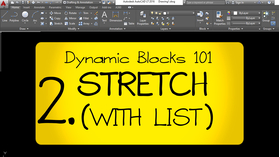How to Make a Shelf Hole Jig that will LAST
Hey guys, this is Mike Dugan from Desunia, your hardware guru! I’ll bet if you’ve ever made a cabinet, you’ve also made a shelf hole jig. Which worked great… until ten minutes in, when the holes got reamed out and it became pretty much useless. So, you make another one, and another one…
Hey, let’s end that cycle of disappointment with these amazing bushings from Desunia. They come in 5mm and ¼” diameters and fit perfectly in a 3/8” hole. Tapered ends make the easy to install, while the ribbed sides provide a ton of holding power. They even have a slight bevel that guides the drill bit in. This allows you to work fast while minimizing metal-to-metal contact, which can dull the drill bit. OK then, enough chit chat… let’s make ourselves a jig!
We could just mark out 2” spacings, but let’s challenge ourselves and shoot for 32mm centers. That’s the standard for most cabinets these days. So, since there’s 25.4 mm to an inch, we just have to divide 32 by 25.4 to get, well, this nightmare. Looks like the old tape measure and pencil approach isn’t going to cut it, so let’s try something else. We’ll cut a piece of scrap to 32mm wide, hit both sides with a reference line, and then chop it into a bunch of short pieces.
You can make the jig out of just about any ¾” thick material. The side offset is up to you, but in this case, let’s do a 2” offset, so the jig will need to be 4” wide. We’ll just make a short jig for this demo, but obviously, now is the time to knock out a variety of lengths, while you’ve got everything set up.
Put a 3/8” brad-point bit in the drill press and clamp the fence to 2”. Set the depth so the bit stops right at the surface and then screw down some thin scrap for a chip breaker. This way, you’ll get some nice, clean exit holes.
Let’s keep the first hole 6” from the end, so we’ll make a mark at that number, locate it on the drill press, clamp down a stop, and drill the first hole. Now, here’s where the magic happens. Instead of messing around with complicated measuring and marking, all you need to do is add a spacer, drill, and repeat. BTW, now you can see what those reference lines were all about. Just keep them perpendicular to the fence, and you won’t make a mistake.
Once the holes are drilled, pound in the bushings, tapered end first. A quick bevel helps with sawdust management later, and adding a couple of helicopters makes front alignment a snap!
OK then… Let’s drill some holes! If you have a stop collar, put it to good use, so the holes all wind up at the right depth. If you don’t, wrapping the bit with masking tape will also work. Speaking of tape, covering any holes that you don’t want drilled is the best way to avoid mistakes.
Drilling the back holes is simple enough, just hold the jig in place and go for it. For the front, give the helicopters a quick twist and drill away. For intermediate shelves, a spacer made from some scrap is all you need.
That’s it! Now you have a jig that was cheap, accurate, easy to make, and should last a lifetime!
Of course, the final order of business is to subscribe and hit that “like” button. Hey, what can I say, I’m insecure and need the positive affirmation! So until next time, this has been Mike Dugan, your hardware guru… signing off.
Be the first to write a review for this product!
We’d love to hear your opinion too! - Just click here!

